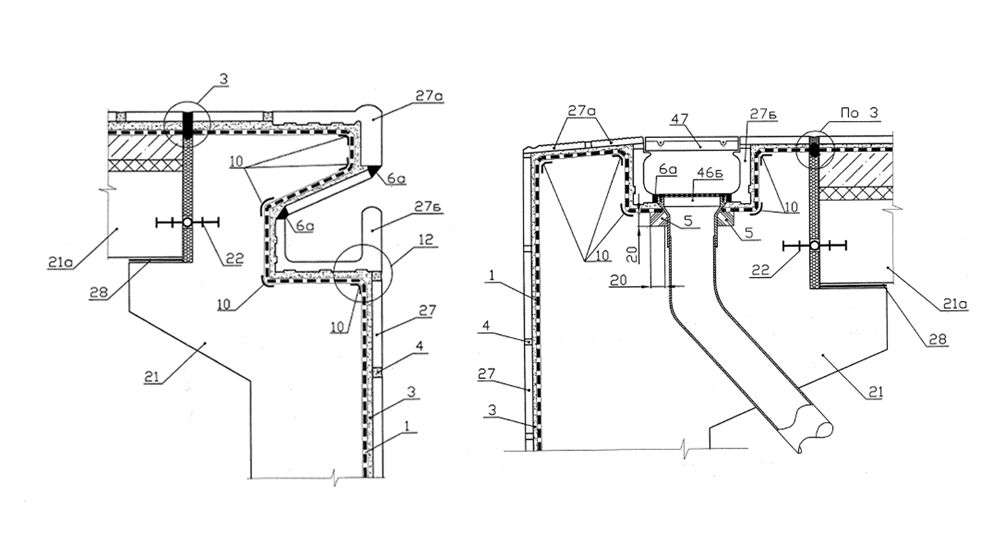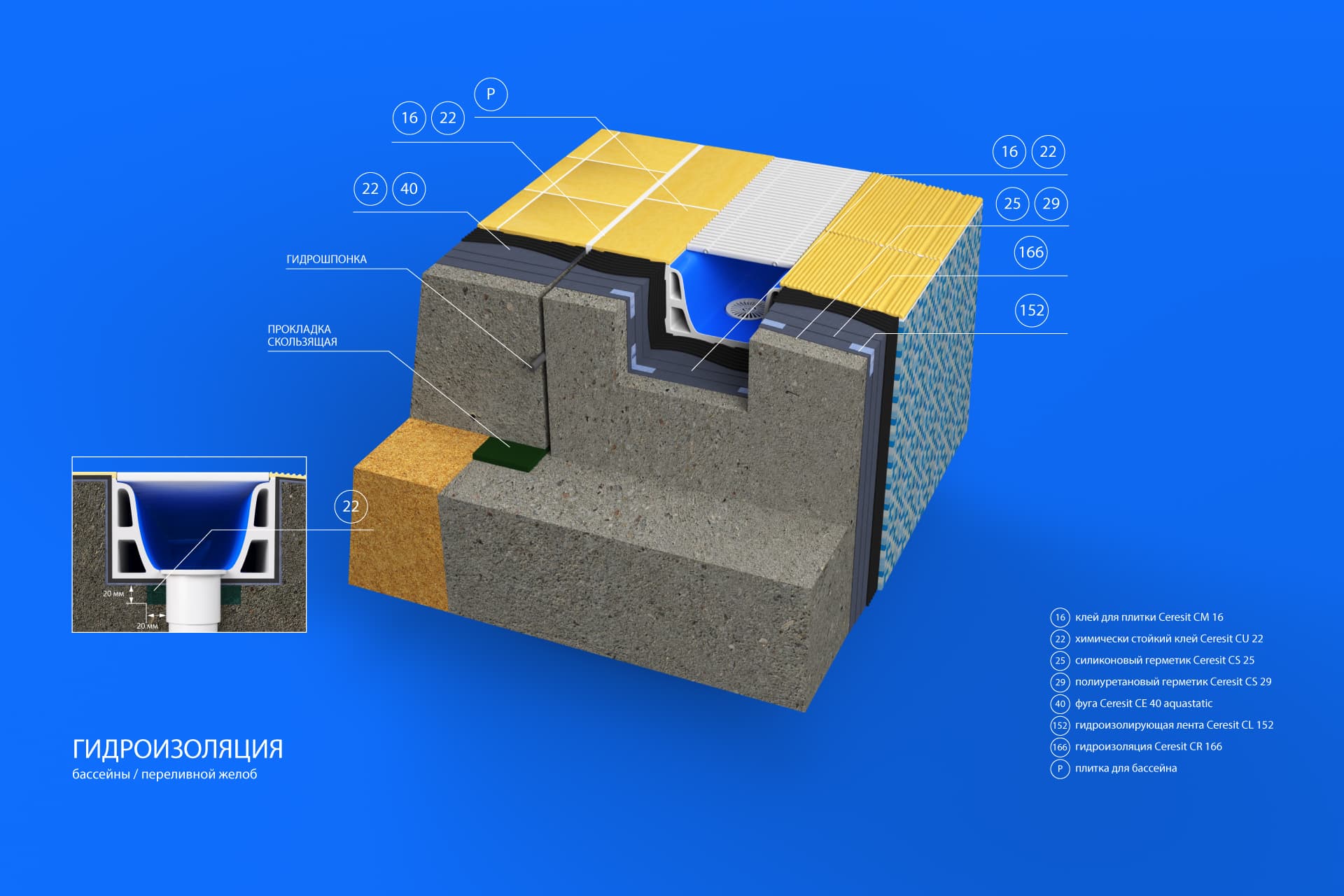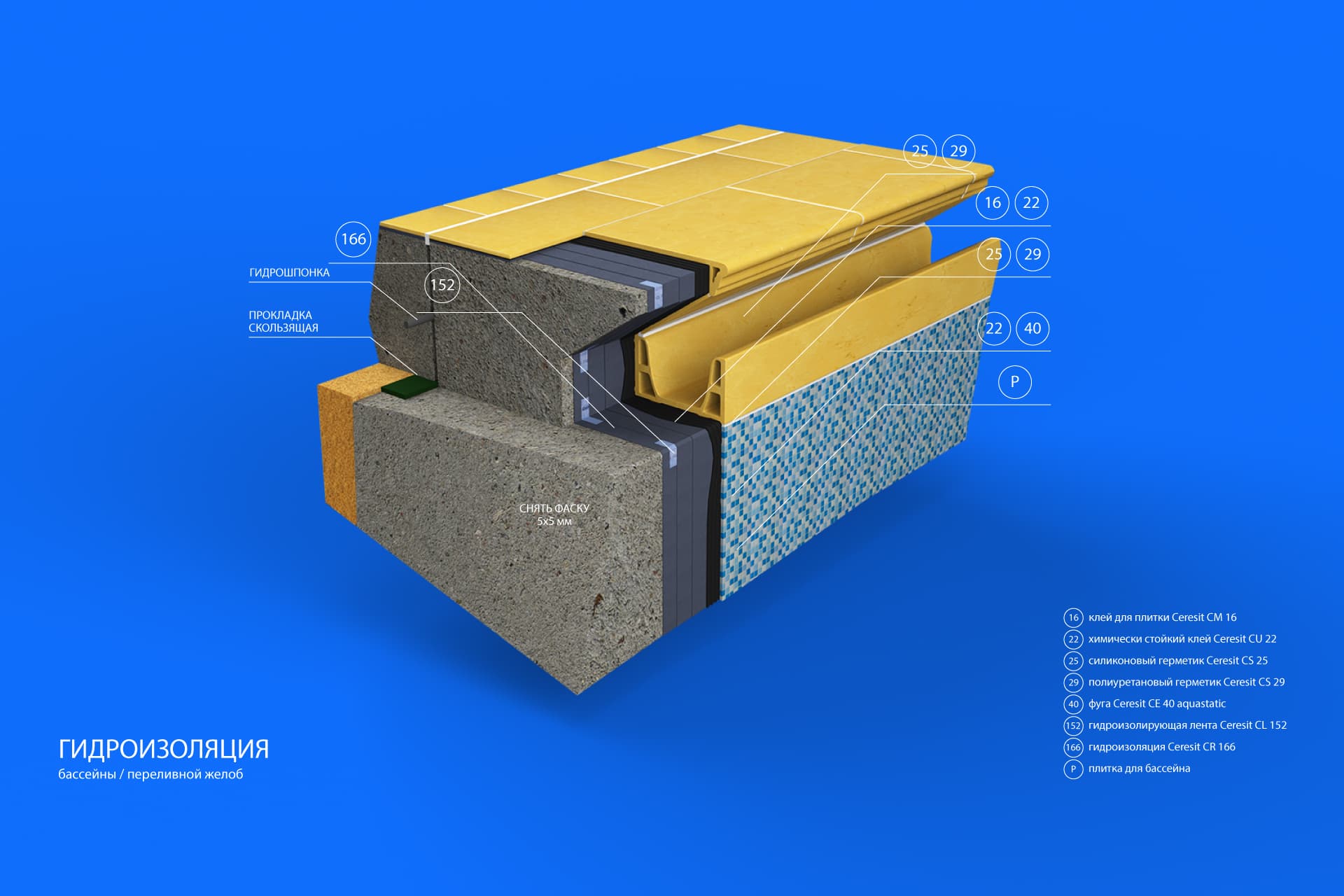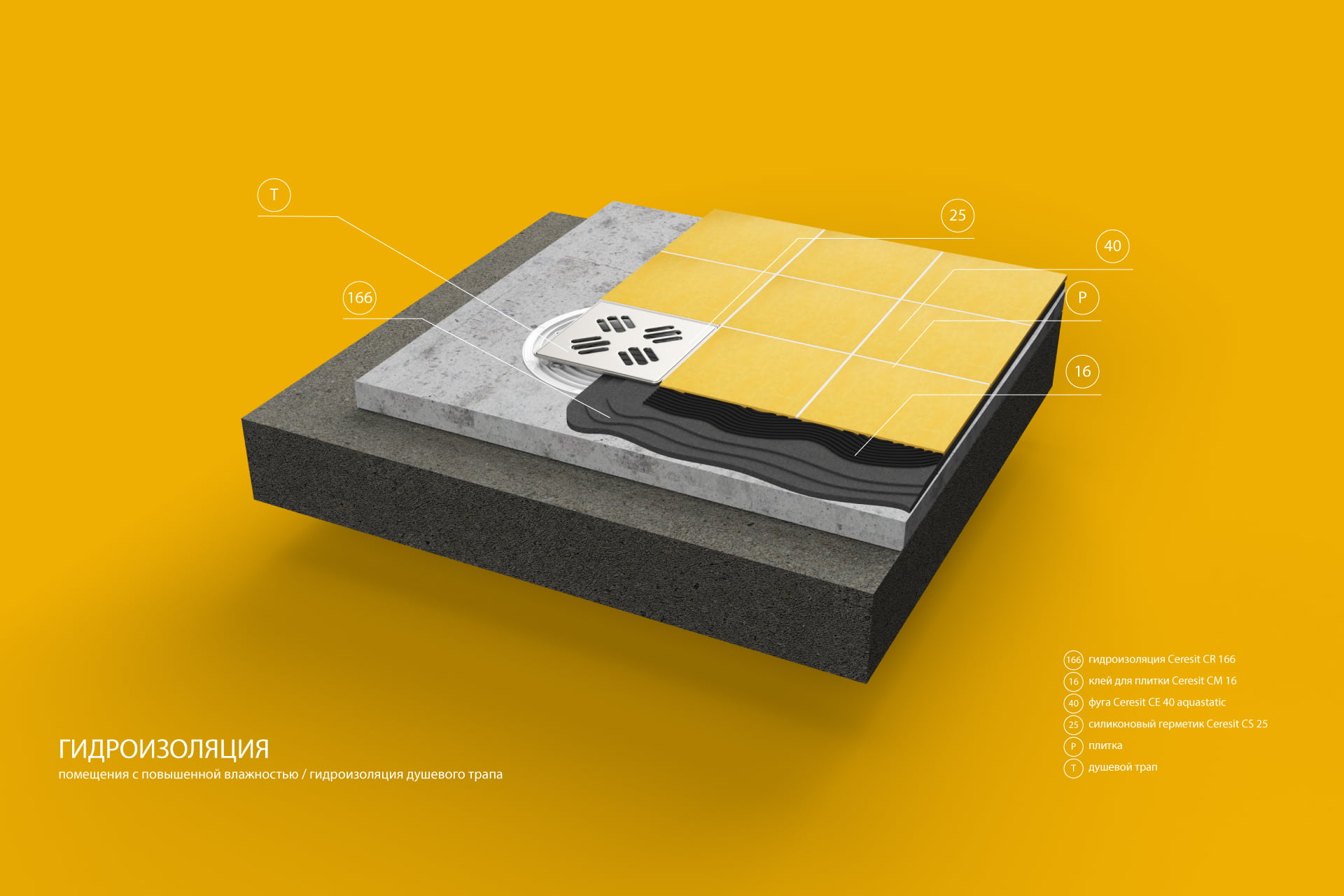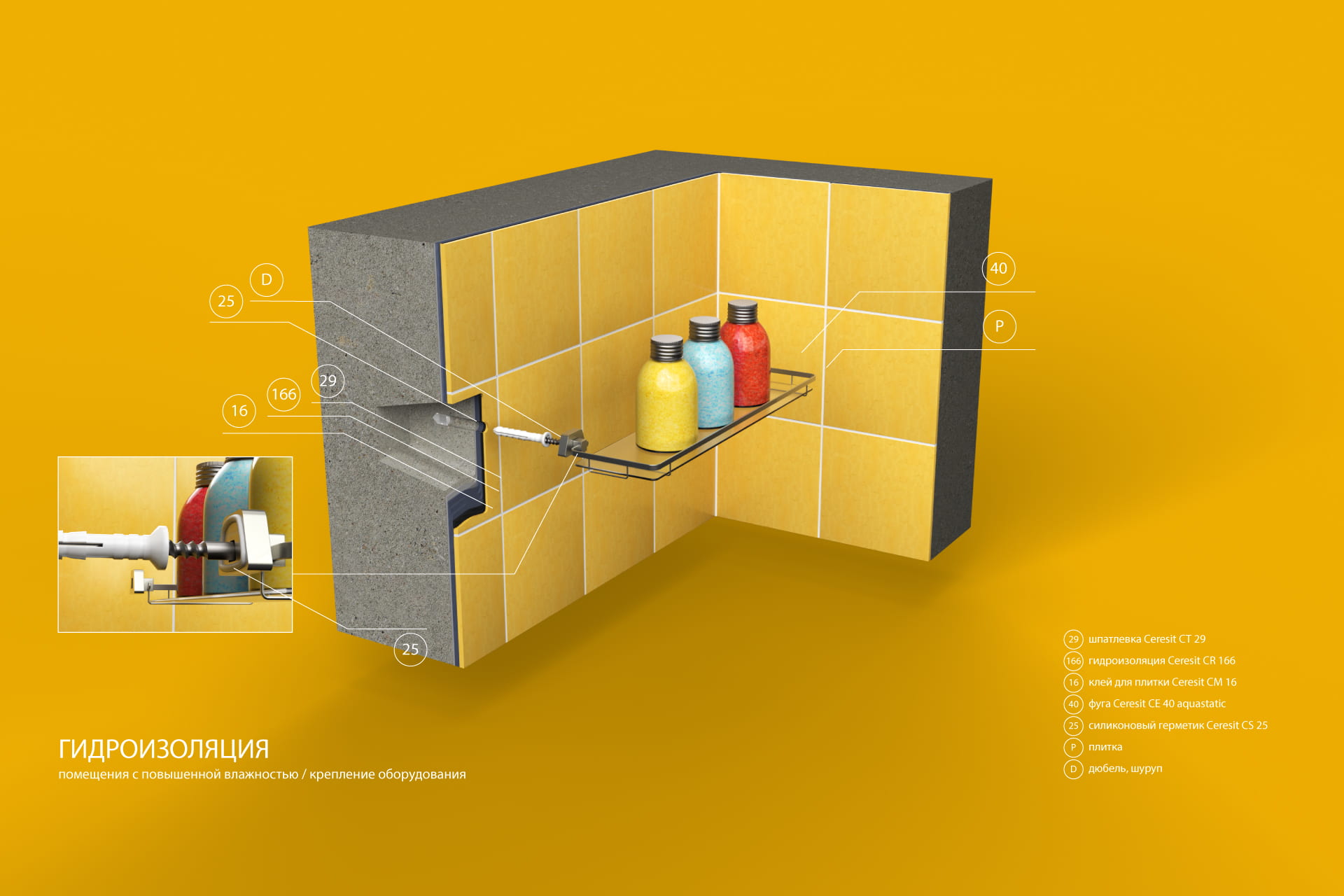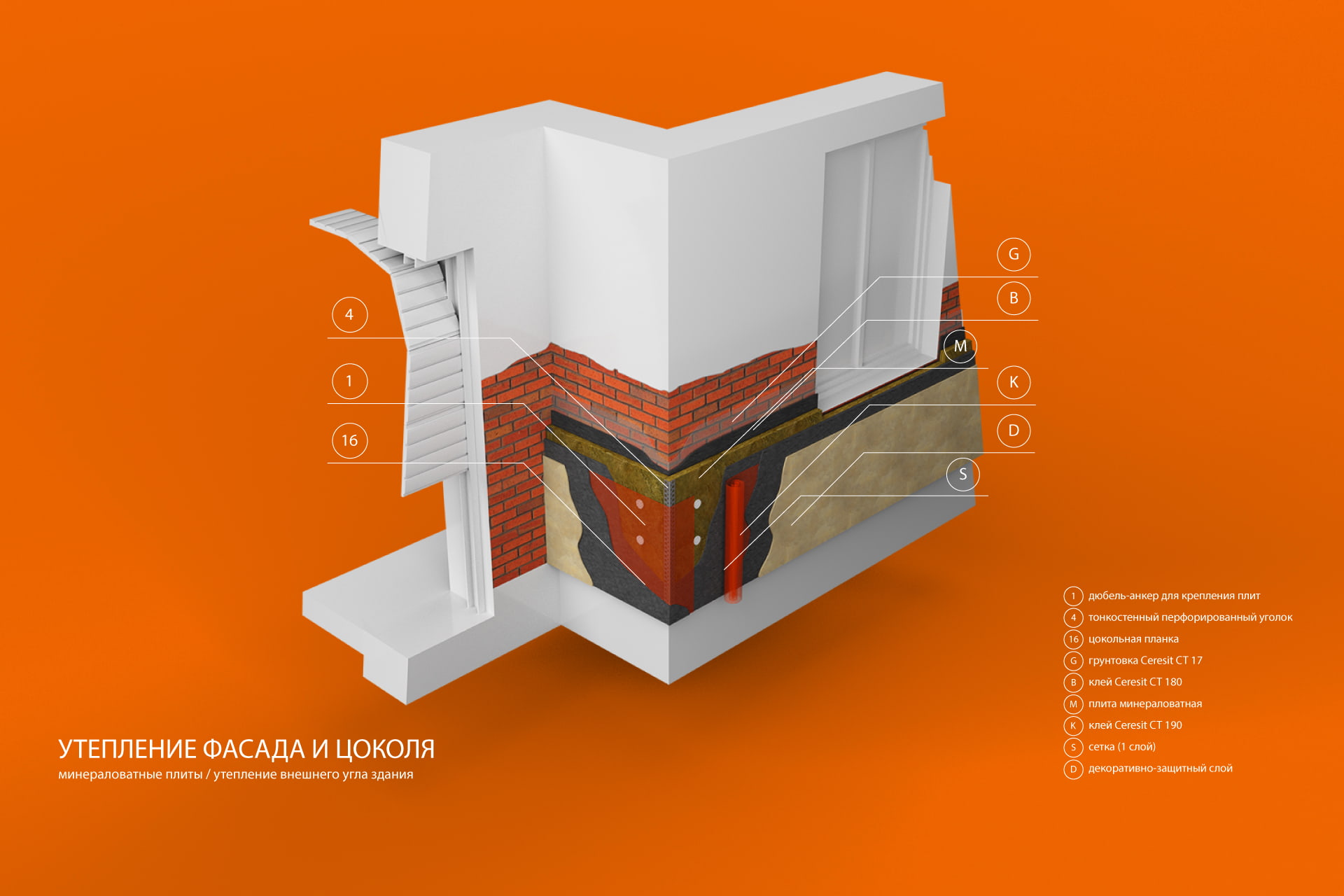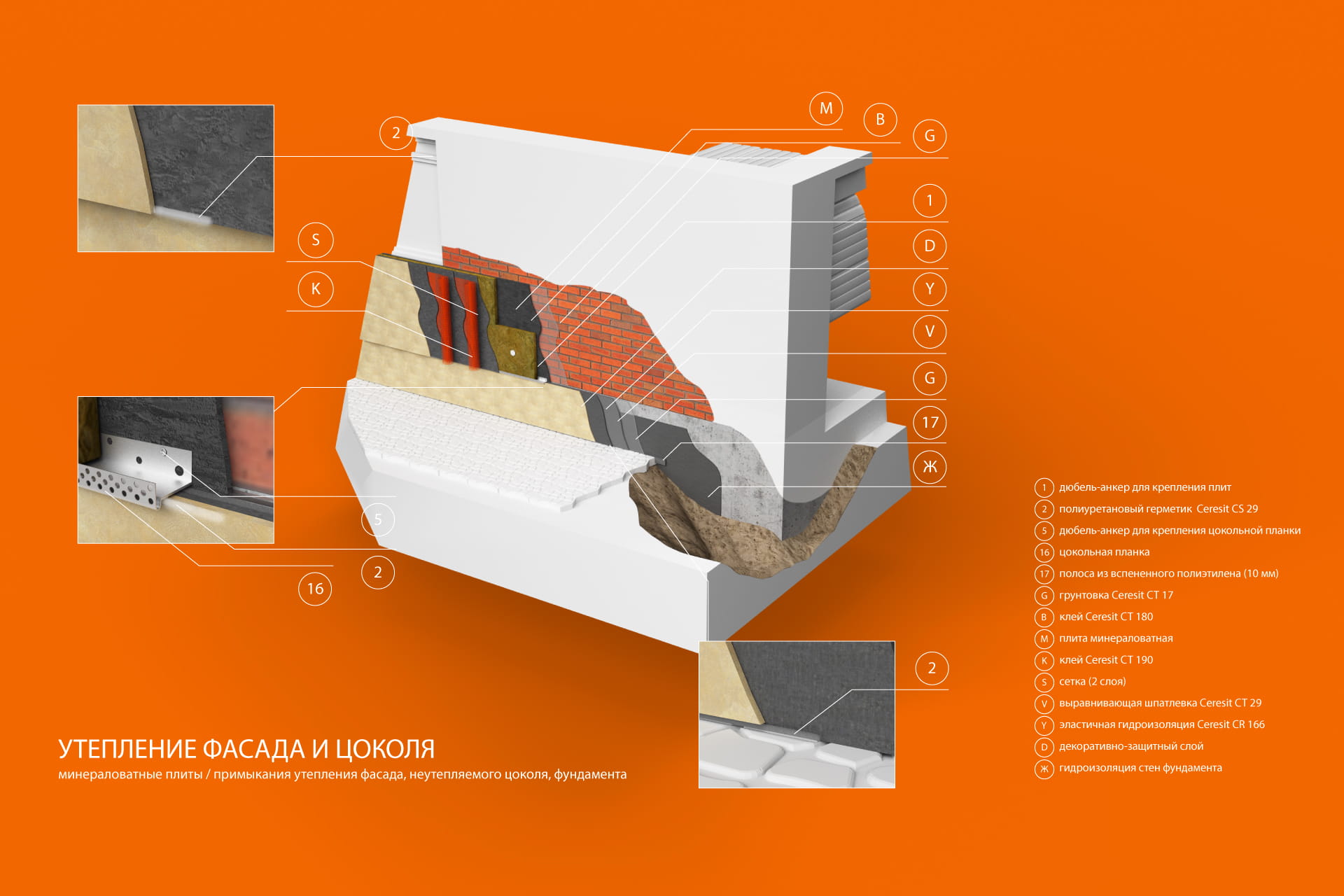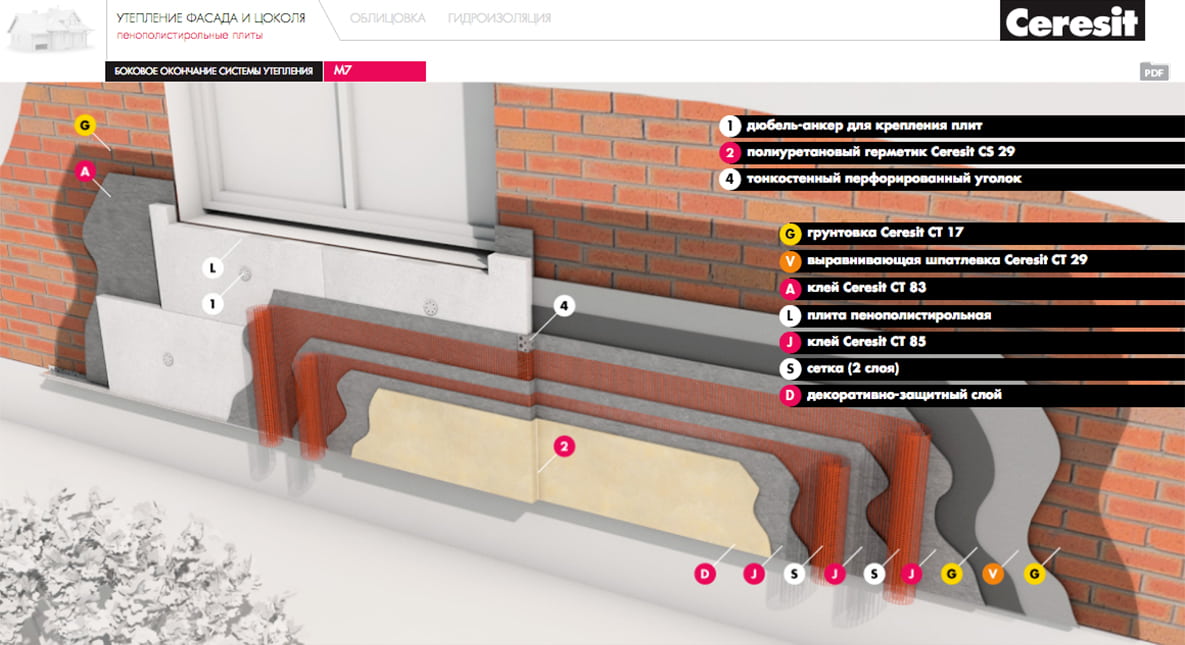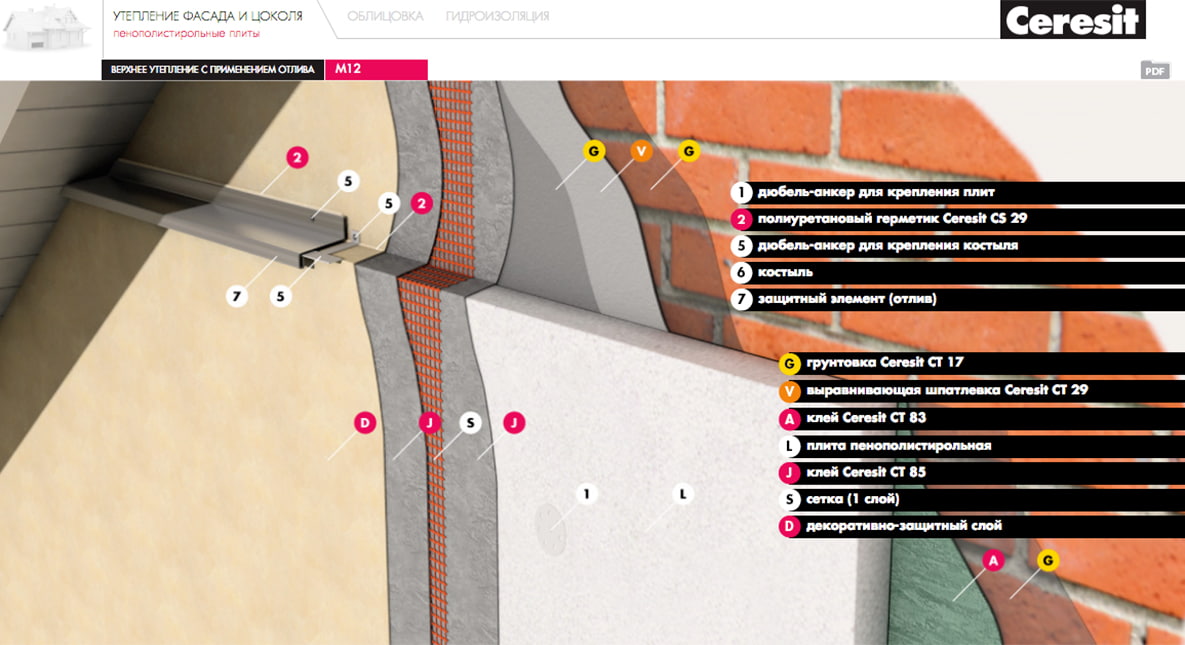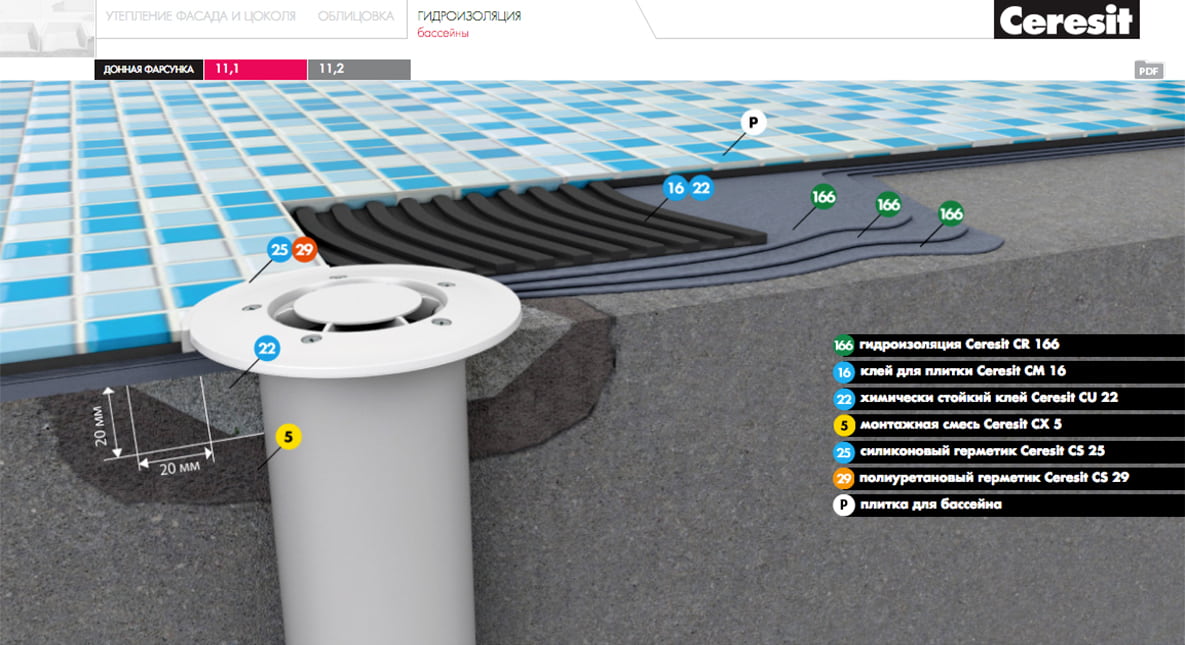Henkel Bautechnik is well known in the construction industry for its Ceresit product line. These are materials used at different stages of work — from waterproofing to insulation.
But how can complex technologies be explained not only to engineers but also to people who renovate or build their homes on their own? Standard drawings are too dry and require expertise, while written instructions don’t always give a clear picture of the process.
That’s why we offered another solution: turning technical drawings into 3D illustrations. This format preserved the accuracy of engineering information but made it accessible to a wider audience — from professionals to DIY enthusiasts.
Today, technical illustration is not just auxiliary graphics. It has become a universal communication tool: it helps train, explain complex processes, and at the same time strengthens the brand image as modern and innovative.
Turning technical drawings into a clear manual
Our task was to create a training manual that would be equally useful for professionals and people without construction experience. It was important to preserve engineering precision while presenting the material in a simple, visual way.
The project covered key construction processes:
- waterproofing of swimming pools and wet rooms,
- tiling works,
- facade and basement insulation.
Each illustration showed not only the final result but also the sequence of applying Ceresit products. This allowed the viewer to immediately understand which material to use and at what stage.
Why we chose 3D over flat drawings
Traditional technical drawings are precise but often difficult to interpret. We proposed switching to 3D visualization, which brought several advantages:
- the ability to show complex details and cross-sections,
- easy implementation of changes and updates,
- visual clarity, even for a non-professional audience.
We didn’t aim for photorealism — readability was more important. The illustrations were designed to be clean, structured, and easy to follow. Additional angles helped highlight details and reinforce understanding.
What visualization gave the Ceresit brand
The project proved that even strict engineering drawings can be turned into clear and aesthetic guides. For Ceresit, this became an important tool that:
- made training materials accessible to a broad audience,
- helps people without professional skills understand which product to choose for their renovation,
- reinforces the brand image as reliable, modern, and technologically advanced.
Thus, the illustrations function both as a training resource and as a marketing tool that builds trust in the brand.
Interactive guide in website format
To make the manual even more convenient, we structured the illustrations into a website format. Users could navigate between sections and easily find the required process.
These were not rotating 3D models, but a carefully prepared series of static renders. Thanks to step-by-step navigation, they became a complete guide — understandable even to those encountering such tasks for the first time.
For Ceresit, this solution was especially valuable: people without construction experience received a practical tool that helps them not only learn but also make independent decisions about which product to use.
As a result, the project transformed strict technical drawings into clear 3D illustrations that strengthen the brand and support its audience — from professional builders to DIY home renovators.

